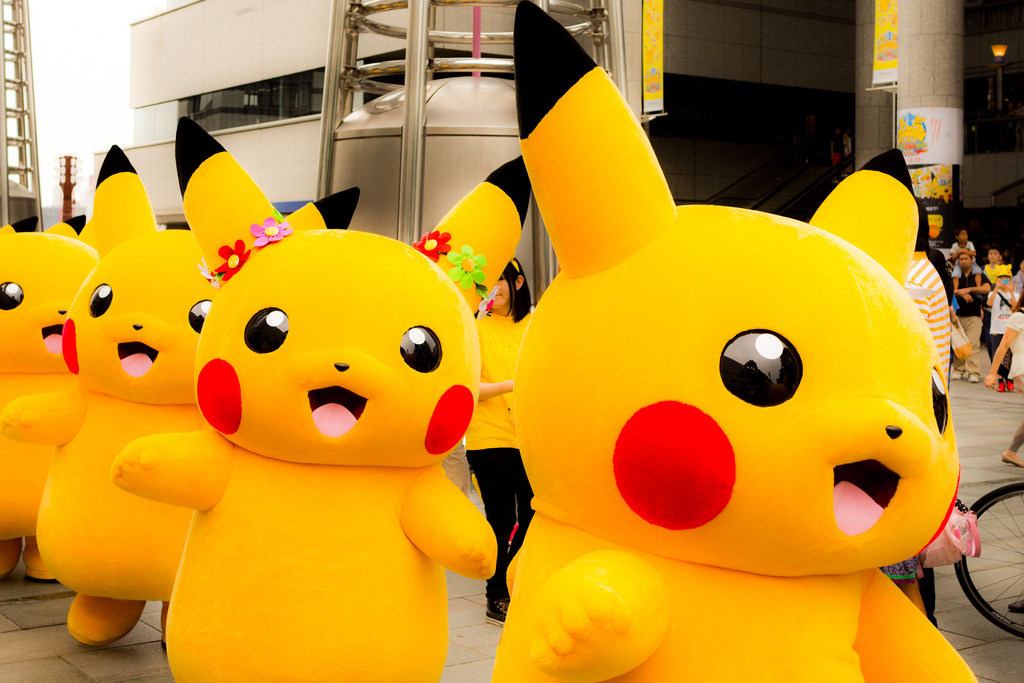Pokemon Go – the world’s hottest game, ever – is constantly bursting out more surprises after its already big success only after a week after launch. Players are now selling their accounts for several hundred dollars – and this may be another step closer to realizing the Pokemon Master dream of every kid. Who knows, in the next 5 years, Pokemon Go can be so immersive that people will start playing professionally, joining other giant international e-sports like League of Legends.
Pokemon Go is a certain game changer. It surely has made AR gaming mainstream, surpassing the VR hype that has been going on for the first half of the year. Different technologies are being developed, then implemented into this Pokemon trend, making the experience even more impressive for players. But the Pokemon trend is only one of the signs that technologies are combining to change our world – and in this article we hope to give you a peek into how that future world may be.
But what is Pokemon Go?
Pokemon has been a gigantic franchise of Nintendo since the 90s. The gist is you – a Pokemon trainer – set off on a journey to catch all the Pokemons (there are officially more than 780 of them right now, but Pokemon Go as of now only includes the original 151).
Pokemon Go is the augmented reality version of Pokemon. This means that instead of controlling an avatar in the game world, you now go around in the real world and catch Pokemons using your phone.
Bear with me a bit more. Some of you are already Pokemon Masters, but if you have yet to catch up on the trends, here are a few key terms to know:
- Pokemons are creatures – big and small – that roam in the wild, with special powers like fire-breathing or earth-quaking. You can catch them, train them, make a team, and square off with your friends in a Pokemon battle.
- Pokeballs are ball-like devices that you use to catch Pokemons.
- You can get more Pokeballs at Pokestops. They are tagged locations where you can meet and get even more goodies for your adventure.
- But catching isn’t the only way you can get Pokemons. They are also hatched from Pokemon Eggs. By carrying an egg around, and walking a certain distance, you can hatch an egg and gain a new member to your team.
- Pokemon Gyms are also tagged locations. Here, you can battle, gain experience and also take control of the gym.
- Each gym is controlled by a team of Pokemon trainers (including you). Each trainer from the team can give one of their Pokemon to protect the gym. You can also battle your own gym, and if you win in such a battle, your gym becomes harder for other players.
Then comes Pokemon Go Plus…
Which is a not-yet-released wearable device that connects to your phone and adds functionality to the game. The connection is established through Bluetooth – which makes the device a sort of beacon. There is yet any information about which Bluetooth protocol this device will use; but since Niantic is a spin-off from Google, the protocol will most likely be Eddystone.
What functionality does Pokemon Go Plus add to the game? According to released press, the device will let you know if there is a Pokemon or a Pokestop nearby. If yes, then it will vibrate and blink, and thus allow you to play the game without constantly looking at your phone. It can be worn either on your wrists (like a watch) and on your chest (like a name tag).
Although not officially released yet, Pokemon Go Plus is yet another technology that will be incorporated into Pokemon Go to make the experience even smoother.
Back to Eddystone versus iBeacon. Apple and Google are competing in the space of Bluetooth Low Energy protocols. So what if Pokemon Go Plus actually used Eddystone? Probably Eddystone will gain a big edge over iBeacon, and thus become more widely adopted. Although i-Devices will still use the iBeacon protocol, that edge will be big enough to secure Google a win in this competition.
And Microsoft HoloLens…
For the last week, the community is already on a craze using their mobile to catch Pokemon. But in the last few days, developers have independently built a prototype HoloLens version for Pokemon Go. CapitolaVR, for example, created a “pinching” gesture to throw a Pokeball – the video can be found below. More demo videos from the company can be found on the same channel.
Prosthetic Knowledge also reported of two other developers, each took a slightly different approach to implementing HoloLens to Pokemon Go. KennyWdev managed to put Pokemon models into the real world, at their real size. General Heed made Pokemon battle even truer to the franchise – by building an attack voice commands prototype.
In response to these developments, Microsoft CEO Satya Nadella acknowledged the potential value of Pokemon Go to HoloLens – calling the game a “killer app”. For those who haven’t watched what Microsoft is aiming at with HoloLens, here’s the demo at E3 in 2015. This video is sourced from Kotaku’s channel here.
Couple the Microsoft HoloLens capabilities together with Pokemon Go’s global hype and we have the perfect engine for wide adoption and development of HoloLens. Once HoloLen’s user base reaches a critical figure, the tration would be enough for Microsoft to take over a major part of the AR and VR market. As Mr. Nadella has regarded, Pokemon Go is truly the necessary component in this competition of head-mount displays.
So, what of it?
Pokemon Go – as a long-standing franchise with such a titanic fan-base – is the necessary nudge to push technologies into mass adoption.
With such a large user base, Pokemon Go provides developers with an incentive to further improve these technology, and to find creative ways to make different technologies work with each other. Within Pokemon Go, we already see the potential combination of natural language recognition, geomarketing, augmented/mixed reality and Bluetooth beacons. Who knows what technology may be up next in that list?
The user base will also be a source for constant and valuable feedback – which is essential to iterative improvement of all technologies. As was stated in E3 2016, Pokemon Go is released now, partly in hopes of gaining reviews and taking a small research of the customer’s needs. Only by releasing the game now can Niantic test their assumptions and fix their mistakes (as with their recent fix in privacy a few days ago). Technologies can also benefit in the same way, for example in the case of fast battery consumption with the AR mode.
Part of the reason for Google Glass’ failure was its lack of a “killer app”, a prominent use case that is beneficial to a large number of users. But Pokemon Go may give Google a better reason to restart its AR ventures, in competition with Microsoft’s HoloLens. The rivalry between these company in AR right now may be dependent solely on which company makes better use of this massive trend.
And that brings us to the not-yet decided competition between indoor location technologies. Many candidates – including BLE beacons, Wi-Fi positioning, RFID, and more – are trying to win, but no one has yet to make a great leap forward. Maybe the key advantage will be who can find one such killer app, and successfully leverage it. But for now, we can only wait.
Header photo credit: Yoshikazu TAKADA



